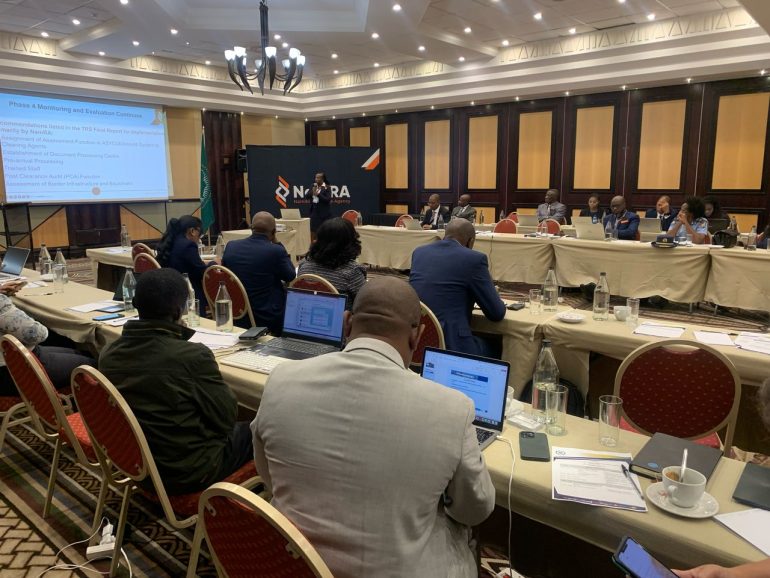Omanyano ovanhu koikundaneki yomalungula kashili paveta, Commisiner Sakaria takunghilile
Veronika Haulenga
Omanyano ovanhu koikundaneki yomalungula kashili paveta, Commisiner Sakaria takunghilile
Veronika Haulenga
Listeners:
Top listeners:
-
play_arrow
Omanyano ovanhu koikundaneki yomalungula kashili paveta, Commisiner Sakaria takunghilile Veronika Haulenga
How politicians can draw fairer election districts − the same way parents make kids fairly split a piece of cake


Fabrice LEROUGE/ONOKY via Getty Images
Benjamin Schneer, Harvard Kennedy School; Kevin DeLuca, Yale University, and Maxwell Palmer, Boston University
Redistricting – the process of determining the boundaries of election districts in which people vote – is a key element of politics that has more of an effect than people might realize. One Republican political consultant called it an election in reverse: “Usually the voters get to pick the politicians. In redistricting, the politicians get to pick the voters.”
In 33 states, legislatures draw congressional district boundaries. In eight, that work is done by commissions meant to be independent from the legislatures. In two states, legislatures and commissions both play roles in the map-drawing process. The remaining seven states have just one congressional district each, so there is no need to draw district boundaries.
How district lines are drawn determines who wins elections and, ultimately, who holds political power.
With such high stakes, members of both parties have incentives to create districts that grant themselves an undue electoral advantage. The result is that one party generally ends up unhappy with the redistricting process, and voters are left with districts that may not reflect their collective will. Sometimes, parties do not even agree on who should serve as a tiebreaker or independent arbiter to resolve disputes.
Our research has found a way that lets politicians pick their voters, but without ending up with excessive partisan gerrymandering, which is what happens when the people redrawing districts produce an election map with a clear advantage for one party or the other.
Several states have made efforts to combat gerrymandering, with unclear success. Take, for instance, an effort to draw new congressional districts in New York: In 2022 a redistricting commission meant to be independent from the state legislature failed to agree on a map, so the process reverted to state legislators.
The map legislators in the Democratic-majority statehouse drew was ruled by a court to favor Democrats too much. A court-appointed independent expert drew a new map, which resulted in the November 2022 election of several new Republican members of Congress from New York. But in December 2023, a court set aside the independent expert’s map and ruled the independent commission should try again.
Our method, which we detail in a new scholarly paper, requires neither cooperation between members of the two major parties nor an independent arbiter to resolve disputes. By giving both parties control of a piece of the process, our method – we call it the Define-Combine Procedure, or DCP – delivers fairer maps than either party would draw on its own. We have also created a website where people can try our method for themselves.
Political fairness
Many people have attempted to solve problems of political fairness and redistricting in various ways. In our approach, we looked to the age-old problem of fairly cutting a cake: How do you make sure the person cutting the cake gives everyone an equal slice? Parents will often have one child cut the cake and the other child pick which piece they want.
We use a similar approach to propose breaking the redistricting process into two steps, each of which is assigned to one political party.
In the first step, one party draws districts on the map. However, unlike regular redistricting, in which they draw the exact number of districts needed, our process requires the first party to draw twice that number of half- or sub-districts. Like full electoral districts, these half-districts must have equal populations and be physically contiguous. Many states also have requirements for district compactness, which would apply to this first stage of map drawing too. We also don’t allow “doughnut” districts – where one district is entirely surrounded by another district.
In the second step, the other party chooses how to pair neighboring half-districts into full-size districts.
Even if each party acts entirely in its own interest, attempting to maximize its own chances of winning the most districts, the fact that the process is split into these two stages holds each party’s ambitions somewhat in check.
Testing representation
We used computer simulations to investigate how this process might work in drawing congressional districts in the 50 states. We found that our method substantially diminishes the partisan advantage that would exist when just one party controls the redistricting process.
For instance, in Texas, which has 38 seats in the U.S. House of Representatives, we estimate that if Republicans had complete control of the map and acted selfishly, they could draw a map with eight Democratic seats and 30 Republican seats. If Democrats were in complete control and acting selfishly, they could create a map with 28 Democratic seats and 10 Republican seats. The party in control of 20 of Texas’ seats in Congress would depend on which party drew the map.
Through simulating the map-drawing process under our method hundreds of thousands of times, using 2020 election results and census data, we find that Democrats would win 17 seats, while Republicans would win 19 seats, with just two seats changing hands depending on which party did which part of the two-stage process.
Regardless of who goes first, our method produces a more representative map. And by reducing the number of seats that swing based on party control from 20 to two, the stakes are lower, which we hope could reduce the dysfunction of the current process.
A national simulation
We also moved beyond one state, simulating how each party could draw districts across the nation and showing how the results would differ if either party did it unilaterally versus via our method.
Under traditional, one-party controlled redistricting, we find that 197 seats – almost half of the 435 in Congress – are in theory up for grabs, depending on who controls the redistricting process in each state.
But under our Define-Combine Procedure, the number of seats that change hands on a partisan basis drops to just 46, based on which party defines the half-districts and which one combines them into full districts.
Using our method of redistricting produces a fairer map. No matter which party is assigned the first step of the process, each party gets a share of districts determined more by its level of support among voters than who controls the redistricting process.
A transition to a new method?
We recognize that parties currently in control of the redistricting process are unlikely to give up that power by adopting our process. But there are important cases, such as in New York state, where both parties, or an independent commission, must produce a map. This happens, for instance, when judges order states to redraw their maps after a legal dispute.
Our method might be particularly useful in those circumstances to arrive at a map with which the parties can be equally happy – and unhappy. We hope the appeal of a process like ours will grow once it is used successfully to guide a map-drawing process.
In our view, fixing gerrymandering is crucial to maintaining the promise of American democracy. It is a difficult problem but not an intractable one. We suggest map drawers get back to basics and take inspiration from how we teach our children to treat each other fairly.![]()
Benjamin Schneer, Assistant Professor of Public Policy, Harvard Kennedy School; Kevin DeLuca, Assistant Professor of Political Science, Yale University, and Maxwell Palmer, Assistant Professor of Political Science, Boston University
This article is republished from The Conversation under a Creative Commons license. Read the original article.
Written by: Contributed
American democracy congressional districts Define-Combine Procedure electoral power gerrymandering map-drawing process partisan advantage political fairness political parties redistricting representation
Similar posts
Windhoek Weather
Most popular

Namdia Heist: More questions, lots of confusion

Omuhwahwameki Michael okuunganeka oshikonga shoku patitha oostola dho Rani moshilongo ashihe.

Walvis Bay woman loses over N$777.000 to a fraudster

Don’t let Pohamba’s tears over Nujoma’s death go to waste

Justice Served: Jandre Dippenaar Found Guilty of Six Murders in Swakopmund Court
Copyright 2025 Future Media (Pty) Ltd | Website by Digital Platforms
Tel: +264 83 000 1000 | Email: news@futuremedia.com.na





